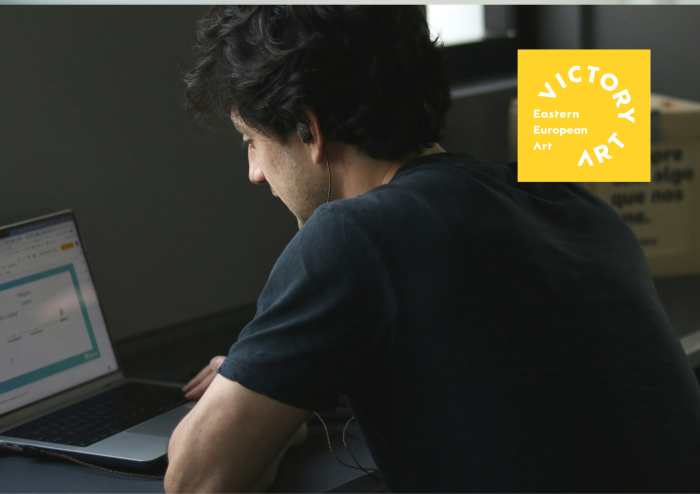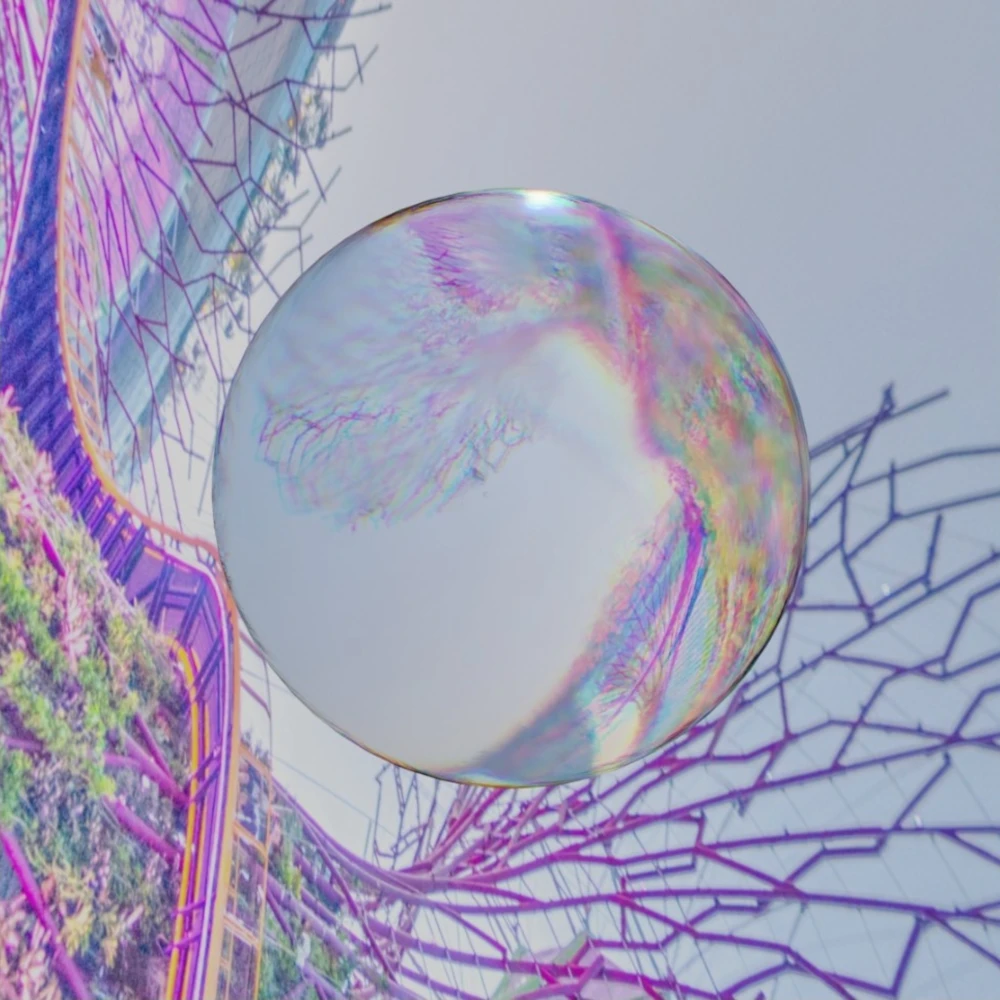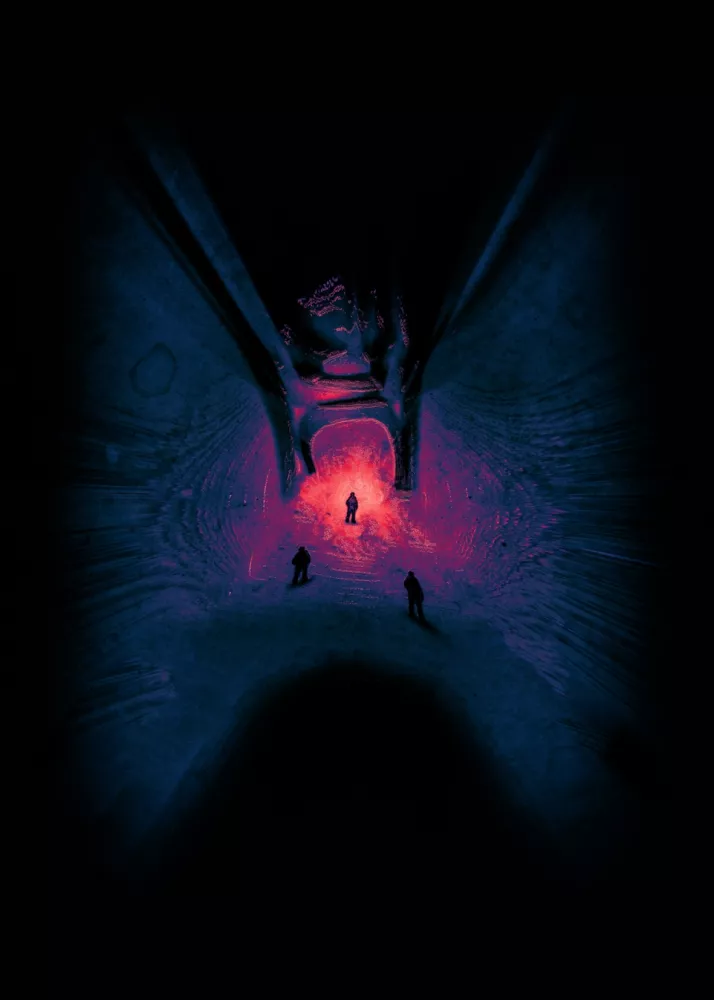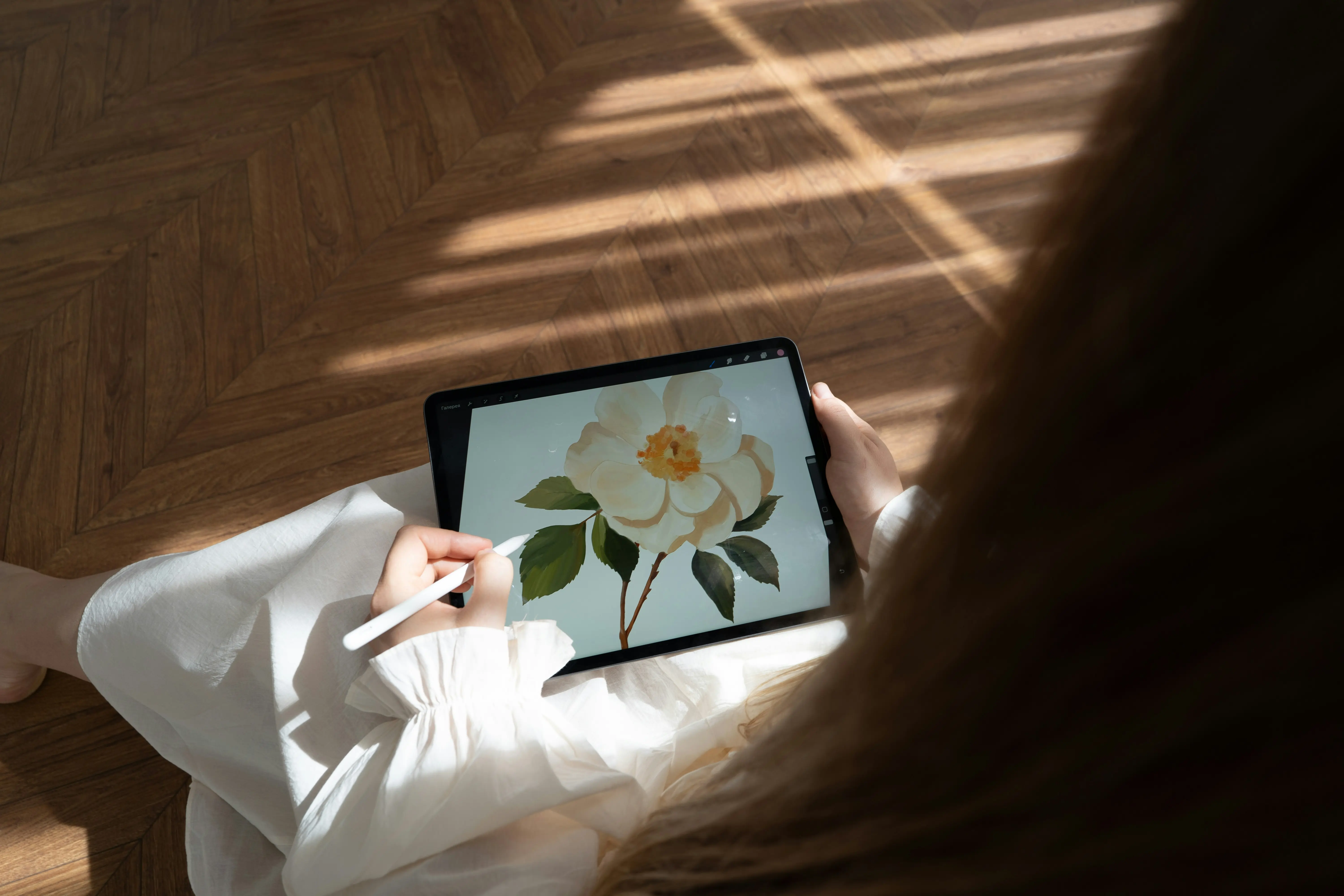MUST READ ART BLOGS
How to Create Abstract Digital Art and Turn It into an NFT?

Hue&Eye Magazine takes us through all the basics to know how to create abstract digital art and turn it into an NFT
Photo by Marília Castelli on Unsplash
What is Abstract Art?
Abstract art means to depict a subject using something that we may not sense through touch, taste, sight, hearing, or smell. As a definition, abstract art is the 20th-century movement characterized by the reduction of natural appearances into simplified forms; for example, constructing art based on geometric shapes or intuitive gestures. Abstract art does not depict a person, place, or thing in the natural world or make any visual references. It is very important to mention that abstract artists do not deal with figurative interpretation. Stylistically, abstract art included the movements of Surrealism, Dadaism, Cubism, and Fauvism.
| Do You Dare To Enter My Mind? |
|---|
How To Create Digital Abstract Art?
You definitely can easily create digital abstract art. Since the rise of digital technology is influencing all aspects of our existence more and more, art is not far behind. Today art can emerge by the touch of a screen, and many artists are turning their back to analog tools in favor of tablets and design software.
It appears inevitable how abstract art may benefit from this technological shift with no rivals. Digital abstract art is blossoming as new software features offer unlimited and alluring aesthetic choices. The software is undoubtedly where digital abstract art expands the horizons of creativity.
Although many artists are still blending traditional analog methods with digital ones, as in the case of photographers, they also rely on new technology to explore different creative outcomes.
For instance, while realistic and figurative illustrators and photographers widely use Photoshop, Adobe Illustrator, and Corel Painter, many of its filters (like Photoshop Wave) are notorious for creating an immense variety of abstract patterns. Yet, as many believe that only generative algorithms may create authentic (code-based) abstract art, the rising number of tools, programs, frameworks, and languages confirms this belief.
Today we have many methods available to digitalize physical artwork. However, it is essential to adapt the technique according to the style of the art piece, whether it is a photograph, a painting, or a sculpture. Conventionally the primary tool that comes to mind is a scanner, despite not being a good choice for large-format pieces. It is, in fact, necessary to embrace a video or photographic device for large formats.
|
Photo by Dmitry Mashkin on Unsplash |
 Photo by Isabel Maria Guner-Velasco on Unsplash |
|---|
Tips to Know Before Digitalizing Your Art
- Whether you choose to use Photoshop, Illustrator, Procreate, or similar, here are some essential tools to ease the process and digitalize small to medium format artworks.
- One essential thing is to start with clean white paper to ensure that your drawing will properly scan later. Colored paper may restrict the digitizing process.
- Another one is to use tracing paper and go over the original sketches. This type of paper is slightly translucent, giving the ability to trace over the initial drawings and polish up the designs even more.
- This step is an absolute must for designers who prefer to have a detailed drawing before moving onto the digitizing phase.
- Then use a fine-tip marker in this stage, as sticking with a darker pen or marker is ideal, especially for scanning.
- Scanning your drawings is the last step before bringing them into design software. Scan your art at 300 pixels per inch or more to ensure a seamless transition from paper to software. The higher the pixels per inch, the crisper the scan will be.
- A scan with a higher PPI tends to be of higher quality due to its greater pixel density. The individual pixels in a 300 PPI image are drastically smaller than a 72 PPI image. Smaller pixels allow for a smoother blend of color and shape.
- If you're turning your sketch into a vector image, pixel density isn't as important. But if you're digitizing your drawing in Photoshop, the pixel density is crucial.
- Lastly, transfer the scan onto a flash drive for easy transport to your computer once you've scanned your drawing.

Can I Turn My Digital Art Piece Into An NFT?
Assuming you know what conceptually an NFT is by definition, the short answer is yes. Physical artworks can be minted and sold online as NFTs as NFT physical art makes the non-fungible market ever more accessible to artists in all creative disciplines.
NFTs are altering artists' lives for the better by connecting physical works with impossible-to-pirate digital versions. They offer creators more control, a wider scene, and more effective options for turning their art into a career. NFTs (non-fungible tokens) are unique digital assets. So, since they need to be digital, can physical art be turned into NFTs?
Linking physical art to NFTs does have its disadvantages that buyers and sellers should be aware of before finalizing any sale.
For example, if an artist creates a physical painting and then sells the digital print as an NFT, they could also sell the physical copy to another buyer, unauthenticated without the NFT.
Conceptually, the " value " aspect is directly proportional to "rarity."
The more unique and intriguing your NFT is, the more chance it can sell for exponential amounts. For this, there are three potential ways to increase the value of your physical art and NFT.
1. Tokenize your artwork and destroy the original piece.
Passionate artists might find this method very unpleasant, but an NFT can never be unique as long as a physical version exists. One way is to destroy the physical version once you have listed the artwork as an NFT. By doing this, you can also set the price of the NFT much higher.
2. Send the physical art to your buyer as a beneficiary with the NFT.
In general, quoting a high price to the NFT and sending the artwork to the buyer (if the format permits this) as a customary helps sell the physical artwork and provide the buyer with an additional gift for their NFT purchase.
3. Tokenize a code within a microchip and put it inside your artwork.
You can tokenize a little code, message, or anything and place it inside a microchip anywhere in your artwork and sell it as an NFT. It's a fresh idea and can also help maintain the credibility of the physical artwork among the viewers. Fun fact, in this way, you can also keep track of the location of your art and foresee potential felonious activities.
Hue&Eye was founded in 2018 by Nicoletta Granati, a former graphic designer with an endless interest in the emerging and contemporary creative scene. Her passion for the arts began a few decades ago, while the Internet was popularized for our use.
Hue&Eye has created a splendid community for all artists and art lovers, highlighting the rapidly evolving trends in digitalization of the art world. Their mission is to expand this community, sharing informative and inspiring content and create connections.
For all aspiring artists, Hue&Eye could be the place to begin your journey in the professional world. You can submit your work or stories to the platform here. To find articles on interesting art related topics, you can check it out on their homepage!
Read more useful NFT articles on Hue&Eye Magazine, or follow them on Instagram!
CHECK OUT OUR BEST BLOGS

.webp)

.webp)
.webp)
.webp)
.webp)
.webp)












.jpg)